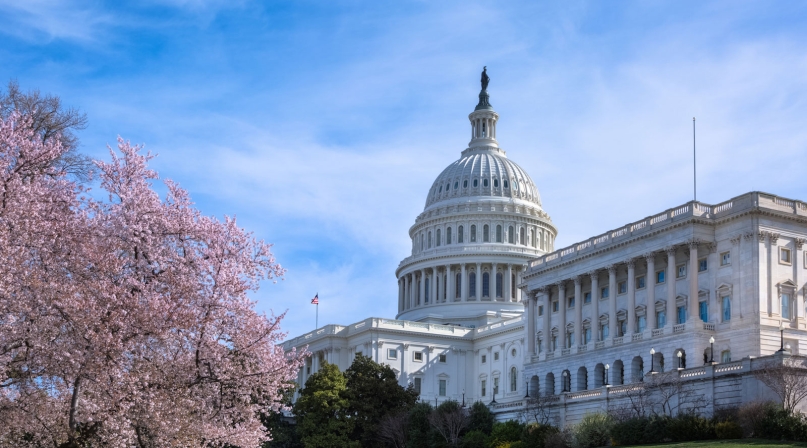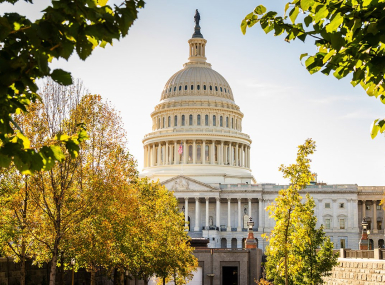U.S. House panel advances FY 2020 spending bill for federal health, human services and workforce programs
Upcoming Events
Related News

Key Takeaways
On May 8, the U.S. House Appropriations Committee approved an FY 2020 spending bill outlining federal funding for programs under the U.S. Departments of Labor (DOL), Health and Human Services (HHS) and Education (ED), among other related agencies. The Labor-HHS-Education measure is the largest non-defense appropriations bill and is the first of the twelve spending bills to move forward in the chamber in the Fiscal Year (FY) 2020 appropriations cycle.
For FY 2020, the House legislation allocates a combined $189.8 billion in discretionary funding for Labor, HHS and Education programs, an increase of $11.7 billion above FY 2019 enacted levels and $47.8 billion above President Trump’s FY 2020 budget request. As passed, the legislation boosts or maintains funding levels for many federal health, human services and workforce programs counties engage to ensure the well-being of our residents.
Given the importance of these programs to counties, highlighted below are topline appropriations figures for the agencies and programs outlined in the Labor-HHS-Education legislation:
Funding Boosts for Key Federal Health and Human Services Programs
For FY 2020, the House bill would allot $99 billion for the U.S. Department of Health and Human Services, an $8.5 billion increase above the FY 2019 enacted level. The largest portion of this funding would be invested in the National Institutes of Health (NIH), which would receive $41.1 billion, and the Centers for Disease Control and Prevention (CDC), which would be funded at $8.3 billion for FY 2020. Funding for NIH and CDC would support research, prevention and education activities, with an emphasis on Alzheimer’s disease ($2.4 billion), HIV/AIDS research ($3.2 billion) and efforts to reduce new HIV infections by 90 percent over the next 10 years ($140 million).
In addition to funding increases for NIH and CDC, the House legislation would also boost funding for the Substance Abuse and Mental Health Services Administration (SAMHSA), which plans and operates community-based services for people with mental illnesses and substance use disorders. For FY 2020, SAMHSA would receive $5.9 billion, an $115 million increase above the FY 2019 enacted level, with increases for substance use disorder prevention activities ($212 million) and treatment programs ($3.8 billion). Funding would also support three new behavioral health programs designed to enhance addiction treatment, which could promote counties’ efforts as we address the ongoing opioid epidemic in our communities.
The FY 2020 measure also includes funding increases for several federal human services programs administered through HHS. The legislation allocates $7.7 billion for the Child Care and Development Block Grant (CCDBG) and $11.6 billion for Head Start, a combined increase of $4 billion for FY 2020. Both programs provide counties with critical resources to support early childhood development and education. The bill would also fund the Community Services Block Grant (CSBG) at $760 million for FY 2020, an increase of $35 million above the FY 2019 enacted level. The block grant enables counties to design and implement anti-poverty programs tailored to local needs.
FY 2020 Funding Increases to Support Workforce Development & Training
Under the FY 2020 legislation, DOL would receive $13.3 billion in discretionary appropriations, $1.2 billion above the FY 2019 enacted level. Of this total, the Employment Training Administration (ETA) would receive the bulk of the funding at $10.6 billion, a $709 million increase above the prior year.
ETA administers workforce programs important to counties, including the Workforce Innovation and Opportunity Act (WIOA), which would receive $3 billion in funding for FY 2020, a $178 million increase above FY 2019. Within the $3 billion allocated to WIOA, Adult programs would receive $900 million; Youth activities would receive $964 million and approximately $1.1 billion would support Dislocated Worker programs. ETA funding would also support the YouthBuild program ($128 million), Registered Apprenticeships ($250 million) and the Job Corps program ($1.9 billion).
Notably, the legislation allocates $150 million in new funding for community colleges and eligible four-year partner programs. This new funding source, which would be distributed via Strengthening Community College Training Grants (SCCTG), would be aimed at meeting local and regional labor market demand by providing skills training to employees in in-demand industries.
Timeline for approval of FY 2020 Labor-HHS-Education measure unclear as Congress weighs budget caps
Congress’ next steps on the Labor-HHS-Education spending bill remain unclear as legislators consider a deal to raise the budget caps. Established under the Budget Control Act in 2011 (P.L. 112-25), the budget caps set limits for discretionary federal spending through FY 2021 to control the nation’s debt and deficit. The Bipartisan Budget Act (P.L. 115-123), which President Trump signed into law in March 2018, lifted these spending caps for FYs 2018 and 2019. Without congressional action to raise the budget caps and nation’s debt ceiling by the end of FY 2019, however, domestic programs and military spending will face severe cuts due to sequestration measures outlined in the 2011 legislation.
Congressional leadership and White House officials are expected to convene this week to discuss a potential deal to raise the budget caps, as well as the nation’s debt ceiling, though disagreements remain between the two parties and chambers.
NACo will continue to engage with congressional appropriators and key committees of jurisdiction to ensure counties have the resources to support the health and well-being of our residents.
For more NACo resources on FY 2019 and FY 2020 appropriations, please see the following links:
FY 2019 spending complete as president signs omnibus funding bill
NACo releases analysis of FY 2018 omnibus federal spending package

Attachments
Related News

U.S. House passes minibus funding package
U.S. House and Senate appropriators introduced a “minibus” appropriations package containing Fiscal Year (FY) 2025 Interior-Environment, Commerce-Justice-Science and Energy-Water spending bills.

County Countdown – Dec. 15, 2025
Every other week, NACo's County Countdown reviews top federal policy advocacy items with an eye towards counties and the intergovernmental partnership.

County Countdown – Dec. 1, 2025
Every other week, NACo's County Countdown reviews top federal policy advocacy items with an eye towards counties and the intergovernmental partnership.